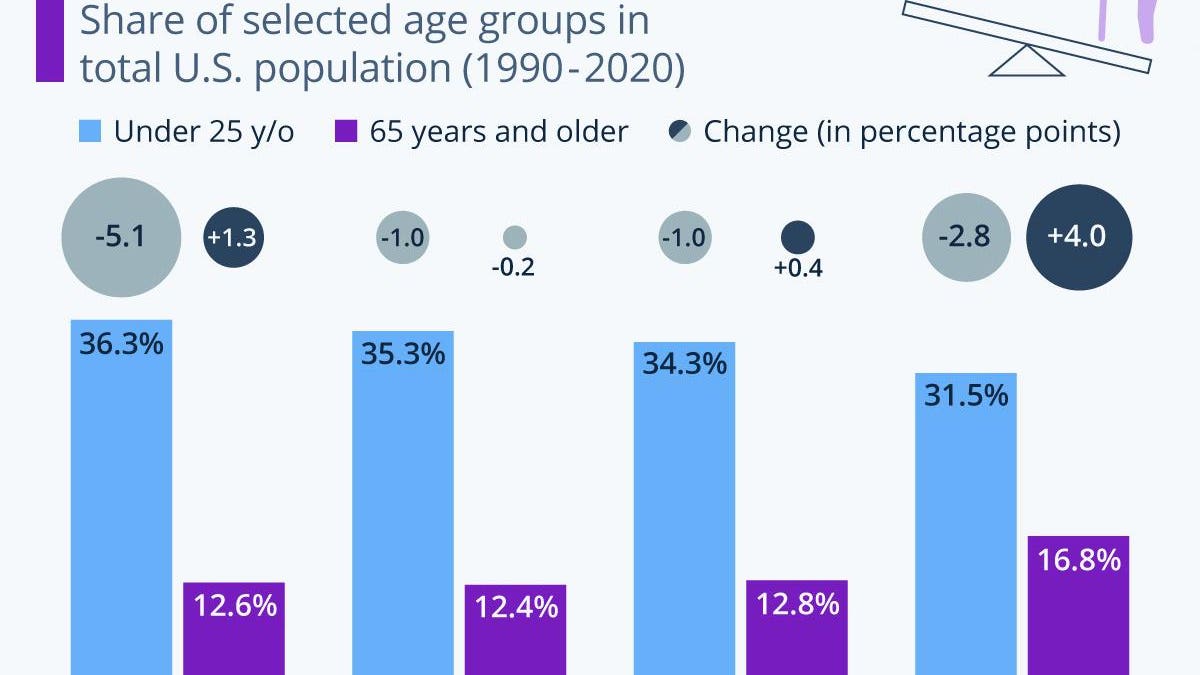According to a new release by the 2020 Census, demographic change has accelerated in the United States in the past 10 years. Especially the group of those aged 65 years and older has grown more quickly, the data shows.
While in the year 2010, 12.8% of Americans were 65 years or older, that had jumped up by 4 percentage points to 16.8% as of 2020. In previous decades, the relative size of the age group had remained more stable. At the same time, the share of Americans under the age of 25 took a bigger dip than usual, decreasing by 2.8 percentage points to 31.5% of the population. Previously, changes in the cohort size had stayed below 1 percentage point per decade.
Major changes to age groups are not unprecedented in the U.S. as numbers from the 1990 Census (compared to the 1980 Census) show. Between the two installments of the count, the last big cohorts of the Baby Boomer generation, which were born around the year 1960, aged out of the under-25 demographic, resulting in a major drop of young people in the country. At the same time, the number of those 65 years or older increased. This was due to the larger pre-war age groups born before 1925 having hit their retirement age by 1990.
These changes between 1980 and 1990 already showed the power of the mighty generation of Baby Boomers. Their ascend to full adulthood diminished the number of young people by more than 5 percentage points in just 10 years, while the aging of the pre-war generation only drove up the number of those 65 years and older by a meager 1.3 percentage points over the same time period.
Baby Boomers remain the biggest demographic force
Now that a good chunk of Baby Boomer cohorts have surpassed the age of 65, they are a major influence on the aging of the U.S. population. Experts have warned that the country is unprepared for these changes that are ongoing. However, in an international comparison, the United States is only at the beginning of its journey towards demographic change. The world’s most prominent aging society, Japan, already counted a 28.5% share of residents who were 65 or older in 2020, while Italy, Greece, Germany and Finland were looking at more than 22% each for this metric.
Thanks to immigration, the U.S. has been able to slow societal aging, but it is happening nevertheless. Immigrants are already contributing around half of U.S. population growth as births have kept declining. Two states among those with the highest share of immigrants in the U.S. were also among its youngest: In Texas and California, median population ages stood at 35.1 years and 37.1 years, respectively— below the new national median of 38.8 years also released by the Census Bureau last week.
—
Charted by Statista
Read the full article here










